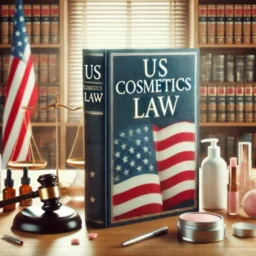 US cosmetics law: in the US, information is key, and everything must be done to ensure that the consumer makes a well-informed purchase decision. The US cosmetics legislation, MoCRA included, seems to be rather light compared to the European one. Typically, it is not prescriptive when it comes to ensuring product safety or substantiating marketing communications.
US cosmetics law: in the US, information is key, and everything must be done to ensure that the consumer makes a well-informed purchase decision. The US cosmetics legislation, MoCRA included, seems to be rather light compared to the European one. Typically, it is not prescriptive when it comes to ensuring product safety or substantiating marketing communications.
The reason for this is that consumers are responsible for the decision they make in their own lives. In other words, consumers are considered fully responsible if they damage their own health since proper information was provided regarding the product. The logical consequence of this is that the consumer can sue the responsible company in the event of a problem. The USA is a more litigious Society, and a consumer suing a cosmetics brand is not unusual. This happens every day (especially in the form of class-action lawsuits) and the costs resulting from settling these can be devastating for a company.
So, the keywords are freedom and responsibility. Although the MoCRA and existing regulations come with a number of obligations, a lot more freedom remain in the hand of the cosmetic brand to demonstrate adequately the compliance and safety of their products.
US cosmetics law – Regulatory context
While they look fairly similar upon first glance, American and European cultures differ in several ways. When it comes to implications for the cosmetics industry, the main differences are as follows:
Consumer Information vs. Consumer Protection
In the US, information is key, and everything must be done to ensure that the consumer makes a well-informed purchase decision. Cosmetics legislation seems to be rather light compared to Europe, and is not prescriptive when it comes to ensuring product safety or substantiating marketing communications. It’s no surprise, then, that consumers are responsible for the decision they make in their own lives. In other words, consumers are considered fully responsible if they damage their own health since proper information was provided regarding the product. The logical consequence of this is that the consumer can sue the responsible company in the event of a problem. The USA is a more litigious society, and a consumer suing a cosmetics brand is not unusual. This happens every day (especially in the form of class-action lawsuits) and the costs resulting from settling these can be devastating for a company.
Precautionary Principle
A key element of the US risk management policies is what’s called the precautionary principle.
The US federal government’s approach to the management of chemical substances sets a very high bar for the proof of harm that must be demonstrated before regulatory action is taken. The burden of proving that a product is unsafe lies with the authorities until an actual safety issue comes up. When such an event takes place, legal recourse by the consumer and/or the authorities then becomes possible, if not likely.
As an example, the US legislation is not prescriptive and only bans six ingredients and restricts only three others [21 CFR 700.11-27 & 250.250], but this should not be interpreted as easy. It’s simply a reminder that the devil is in the details, and the most dangerous traps are the ones that remain invisible.
Any cosmetic marketed within the US market must be compliant with provisions of the Federal Food, Drug and Cosmetic Act, the Fair Packaging and Labeling Act and all regulations published under the authority of these laws (and specific state regulations may also apply).
In the USA, cosmetic products fall into three product categories:
These cultural traits of the USA led to two main federal acts that regulate cosmetics:

Though, what is called ‘cosmetics’ in the USA does not perfectly align with the definition of ‘cosmetics’ in the EU/UK and most of the other countries:
Regular Cosmetics
The FDA defines cosmetics [FD&C Act, sec. 201(i)] by their intended use, as “articles intended to be rubbed, poured, sprinkled, or sprayed on, introduced into, or otherwise applied to the human body…for cleansing, beautifying, promoting attractiveness, or altering the appearance”. Examples: skin moisturizers, perfumes, lipsticks, fingernail polish, eye makeup and facial cosmetics, cleansing shampoos, permanent waves, hair color and deodorants, as well as any substance intended for use as a component of a cosmetic product.
Over-the-counter products
Over-the-counter products are drug products available without a prescription. OTC drugs are defined by the FDA [FD&C Act, sec. 201(g)(1)]] as “drugs that are safe and effective for use by the general public without seeking treatment by a health professional”.BIORIUS can cover OTCs with existing monographs. The FDA has published monographs (i.e., rules), stating requirements such as which ingredients may be used and for which purpose.
Soaps
The FDA defines “soap” according to two conditions:
- the bulk of the nonvolatile matter in the product consists of an alkali salt of fatty acids and the product’s detergent properties are due to these alkali-fatty acid compounds, and
- the product is labeled, sold, and represented solely as soap [21 CFR 701.20].
